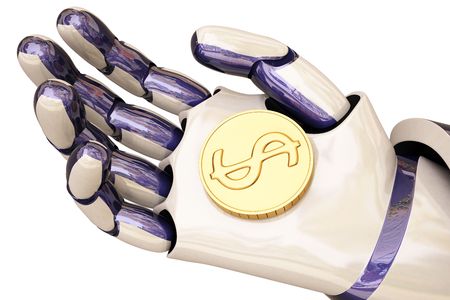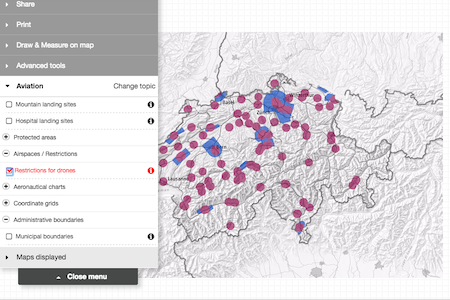Charlotte Walker-Osborn and Paula Barrett
Eversheds Sutherland LLP
In late 2016, in the UK, the Commons’ Science and Technology Committee published a report on robotics and artificial intelligence. The report recommended that a standing Commission on Artificial Intelligence be established to examine the social, ethical and legal implications of recent and potential developments in AI. As of 12th January, MEPs from the parliament’s legal affairs committee passed Mady Delvaux’s report into robotics and AI. As a result, the European Parliament will vote on draft proposals in March for the creation of specific regulation around the use of robots and AI.
The global AI market is expected to rise exponentially in the coming years. According to Kyle Nel, Executive Director of Lowe’s Innovation Labs, “AI is going to be like electricity or the internet – it’s going to be foundational technology for which most things are built.” Tractica, the US market intelligence firm that focuses on human interaction with technology, projects that the global revenue from AI will increase substantially from $643.7 million in 2016 to $36.8 billion by 2025.
Competition in the retail sphere is fierce and more and more brands will look to use AI and robotics expertise as a USP to draw in consumers and drive up sales. AI in the retail sphere has only just started but its momentum is potentially unstoppable – in fact, it’s seen as being crucial to online retail and e-commerce. Businesses that ignore this rising trend are likely to find themselves struggling in this ever competitive race to become “innovative” – using AI to better understand, connect with, and create superior experiences for consumers.
What techniques are used to improve the consumer experience?
AI techniques impact the streamlining of the retail process and transform the online shopping experience into one that mirrors the shop floor. As long as you work within the bounds of data privacy laws, AI capabilities enable the company to provide a deeper insight into their consumers.
Brands can benefit from:
- Engaged interactions with consumers;
- Enhanced user experience with the brand; and
- Resulting in better consumer retention.
Retailers who are infusing their business with AI – who is leading?
Raconteur reported on 26 May 2016 that The North Face are using AI to help consumers find the “perfect jacket”. When you visit their website, consumers are greeted with a series of questions, for example, like where and when they plan to use the coat to create contextual product recommendations.
The Starbucks “My Starbucks Barista” app allows users to place their order by tapping a button and talking to a virtual barista. The app then transfers the order to a nearby store where an employee makes the drink. Users can then pick it up within minutes, bypassing stores’ long lines to the cash register (Source: Business Insider 24.12.2016).
Lowe’s are unleashing its own branded machines called “LoweBots” in 11 Bay Area stores this year. Each store is equipped with a couple of LoweBots that use natural-language processing – a core component of AI – and respond to customers’ questions like, “Where are the hammers?”. Lowe’s Innovation Labs’ Kyle Nel says that the robots can “tell the difference between a person and an object, so it will engage a person and talk to them.” (Source: Adweek 02.01.17).
Robots and supply chain automation
Retailers are also adopting AI and the use of robotics in their supply chain to streamline processes. The International Data Corporation expects the worldwide robotics market to reach $188 billion in 2020 (Source: IT Web Online 11.01.2017 and Financial Times 3.05.2016).
The boom is taking place in Asia with Japan and China accounting for 69% of all robot spending. The rise is due to the need for speed driving investment in automated solutions. More than half (51%) of those in the supply chain and logistics industry think that robotics and automation will give their companies a competitive edge according to a recent MHI and Deloitte survey. For example, last year, Amazon installed 30,000 robots across 13 warehouses in the UK to get packages out more quickly and it was able to ship packages in as little as 13 minutes from pick up stations (Tata Consultancy Services; Business Insider).
So, uptake is rising; where is the law…?
Many countries’ laws are currently catching up with the need for changing laws as a result of the changing risk profile and social and other impacts which result from use of AI and robots. It will be important to watch the status of legal and policy changes in order to consider your own company’s potential legal coverage and/or liability whether you are “selling” AI/robots or adopting their use.
Liability for Acts and Omissions of Robots and AI
The law is unclear in many territories in relation to an “owner”, manufacturer and/or user’s liability for acts and omissions by robots and AI. 2017 is the year in which many countries are seeking to generate legislation which will give at least some framework in these areas. For example, the 2017 report from Mady Delvaux, examines if robots should have legal rights and be given legal status as an “electronic person” as well as whether a robot can be held liable for accidents. There is much talk about whether robots should have a “kill switch” so they could be switched off if needs be. The EU report sets out some proposed principles which include:
- A robot may not injure a human being or, through inaction, allow a human being to come to harm. You can see immediately this is likely to be abused – for example, drones have already been used in warfare and use of robots would give a much bigger advantage to warring nations.
- A robot must obey the orders given it by human beings except where such orders would conflict with the above. This seems strange given robots may be given their own legal status. It will be interesting to keep track of further discussion in this area.
- A robot must protect its own existence as long as such protection does not conflict with both of the above.
In an Annex to the report, liability is looked at in some detail. The report sets out that “civil liability for damage caused by robots is a crucial issue which also needs to be analysed and addressed at Union level in order to ensure the same degree of efficiency, transparency and consistency in the implementation of legal certainty throughout the European Union for the benefit of citizens, consumers and businesses alike”. The report continues that whatever legal solution is applied to the civil liability for damage caused by robots in cases other than those of damage to property, “The future legislative instrument should in no way restrict the type or the extent of the damages which may be recovered, nor should it limit the forms of compensation which may be offered to the aggrieved party, on the sole grounds that damage is caused by a non-human agent.” The report comments that: “In principle, once the parties bearing the ultimate responsibility have been identified, their liability should be proportional to the actual level of instructions given to the robot and of its degree of autonomy, so that the greater a robot’s learning capability or autonomy, and the longer a robot’s training, the greater the responsibility of its trainer should be; notes, in particular, that skills resulting from “training” given to a robot should be not confused with skills depending strictly on its self-learning abilities when seeking to identify the person to whom the robot’s harmful behaviour is actually attributable; notes that at least at the present stage the responsibility must lie with a human and not a robot”. This is clearly going to be a very difficult area to legislate for if a dividing line is to be struck – can or will liability be separated from the human at a certain point?
Linked to the above, it will be very interesting to see the position being taken by the insurance industry in relation to AI and robotics as both the technology and the law develops. The report itself suggested that a potential solution “to the complexity of allocating responsibility for damage caused by increasingly autonomous robots could be an obligatory insurance scheme, as is already the case, for instance, with cars; notes, nevertheless, that unlike the insurance system for road traffic, where the insurance covers human acts and failures, an insurance system for robotics should take into account all potential responsibilities in the chain”. This has been an issue being grappled with by insurers in terms of driverless vehicles for some time and many of the same principles apply more widely. There are a number of recommendations in the report which are worth reading, whether your business is “selling” AI and/or making robots for sale or intending to use them in their businesses.
Conclusions
It is clear in numerous countries across the world that 2017 is the year that they will look to grapple with and update their laws to deal more comprehensively with AI. The UK, US, EU and Japan all indicated they will look at the legal implications of AI (including to intellectual property and liability) in 2017. The UK will have the added complexity of Brexit such that if new EU laws seek to deal with AI, the UK may look to keep those (if implemented before the UK leaves the EU) or may need to apply its own.


.jpg)
.jpg)
.jpg)

.jpg)
.jpg)



